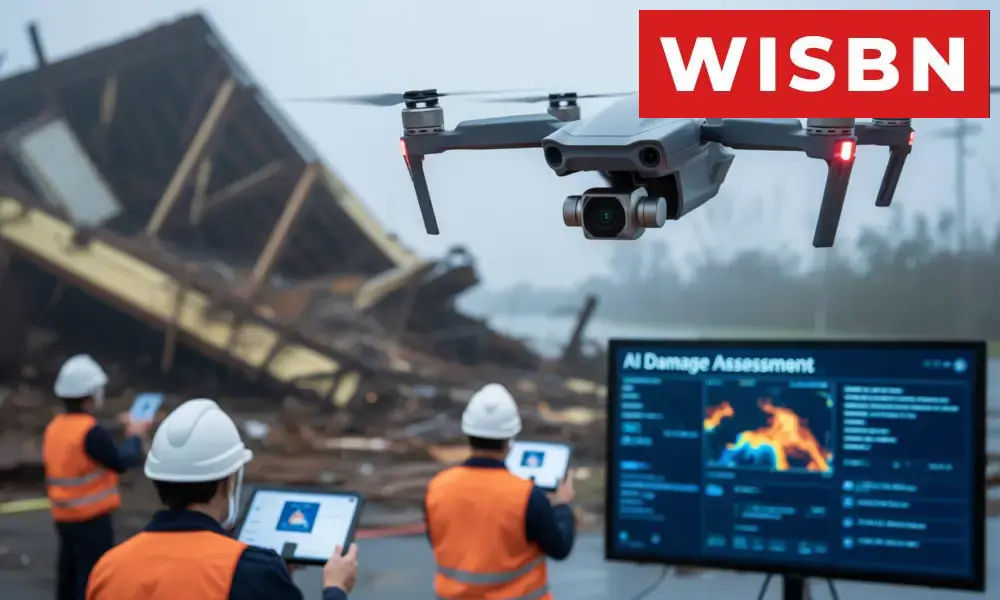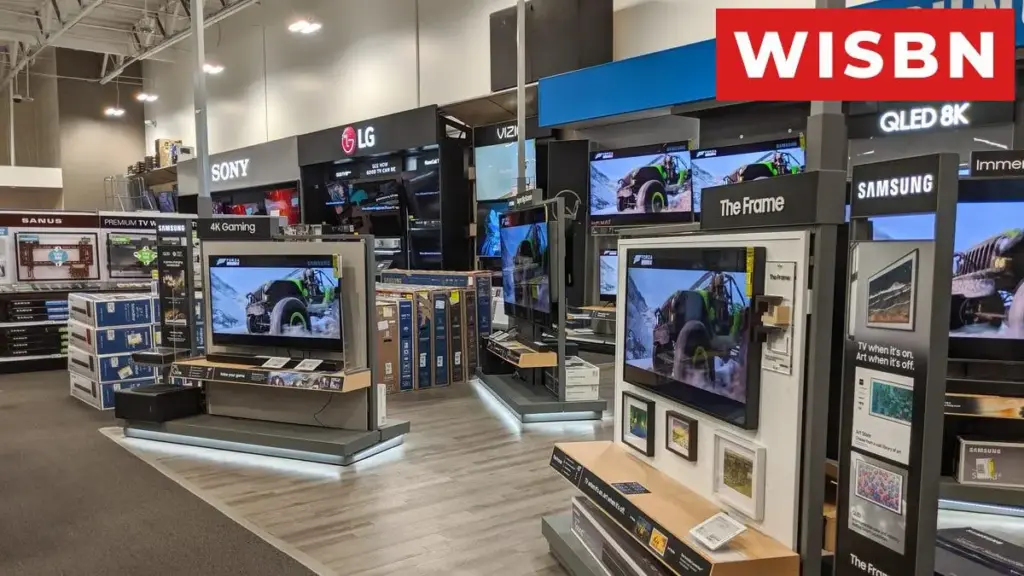When a flood, burst pipe, or severe storm impacts a residence or commercial property, time is against you. You call in Water Damage Restoration Services to salvage what remains, prevent further deterioration, and restore the premises. But the landscape is shifting. The era when drying simply meant turning on large fans and hoping for the best is over. Today, Water Damage Restoration Services rely on sensors, algorithms, drones, and data to make smarter, quicker, and safer choices.
In this piece, I’ll walk you through that evolution. You’ll discover what technology is available now, how technicians apply it step-by-step, where the pitfalls lie, and where the sector is moving next. My aim: you leave seeing Water Damage Restoration Services as a tech-led discipline and understanding what distinguishes top providers.
Understanding Water Damage Restoration Services Today
The Traditional Challenges
In conventional Water Damage Restoration Services, the workflow starts with a visual survey, removing wet items, lifting carpets, and positioning fans and dehumidifiers. Yet much of the harm is concealed — behind walls, beneath floorboards, inside ceilings. That hidden moisture causes structural deterioration, timber deformation, mold, and health hazards. Technicians often had to guess where to bore holes or strip finishes, sometimes performing excessive demolition just to locate the damp areas.
Why Innovation Is Necessary
Because of those limitations, errors were common. You might under-dry (leaving damp pockets) or over-dry (wasting energy). Delays occur while waiting for data or taking manual measurements. Insurance claims become contentious when you can’t document every detail. With increasing climate events and more frequent floods, Water Damage Restoration Services must deliver speed, precision, and verifiable proof. That’s why integrating moisture detection, continuous monitoring, and data analytics is no longer optional — it’s vital.
The Role of Thermal Imaging in Disaster Recovery
How Infrared Cameras Detect Hidden Moisture
Infrared or thermal imaging cameras detect heat rather than visible light. Damp materials often cool and heat differently than dry ones; the thermal contrast reveals “cold spots” or irregularities behind walls or under floors. Technicians use this to pinpoint concealed leaks or moisture intrusion without cutting into drywall. Thermal imaging is now a fundamental tool in Water Damage Restoration Services practice. For more on their operation, refer to common guides on infrared thermography.
Best Practices for Using Thermal Imaging in Water Damage Restoration Services
- Always calibrate the camera and obtain a clean reference reading
- Combine thermal imaging with moisture meters to verify — thermography alone can be misleading
- Perform scans at night or under stable temperature conditions to reduce noise
- Use a grid pattern to survey the entire area, not just obvious suspect spots
- Archive the images, date/time stamps, and link them to reports for clients and insurers
Used correctly, thermal imaging reduces guesswork and limits unnecessary demolition.
Smart Sensors, IoT & Remote Monitoring
Continuous Moisture Monitoring
Rather than occasional spot checks, smart sensors and IoT devices enable restoration teams to monitor moisture, humidity, and temperature continuously. Small sensor nodes are placed behind walls, under slabs, or inside HVAC ducts. Data is transmitted every few minutes to a cloud dashboard. That’s a significant change in how Water Damage Restoration Services manage drying and oversight.
Alerts, Data Logging & Remote Control
When moisture exceeds set thresholds, alerts are issued. Teams receive notifications on phones or tablets. Data logging generates historical curves showing drying progress. Some systems even let technicians adjust dehumidifiers or fans remotely—to increase or reduce power without boots on site. This remote control saves time, prevents over-drying, and yields more precise outcomes.
AI & Machine Learning in Damage Assessment
How AI Processes Images & Sensor Data
AI in Water Damage Restoration Services ingests thermal images, sensor streams, building plans, and previous job records. It learns patterns: how moisture migrates, where leaks typically hide, which materials retain dampness. The AI models can highlight vulnerable zones or predict moisture spread. That means technicians receive prioritized areas instead of scanning blindly.
Predictive Modeling for Risk Zones
With machine learning, restoration teams can forecast which areas face the highest risk of secondary damage or mold growth. The system might flag that drywall adjacent to a pipe will be damp within 12 hours, or that a ceiling cavity likely contains residual water. That predictive intelligence helps allocate resources, sequence tasks, and shorten total restoration time. The move toward AI-driven damage estimation is already changing how claims are processed.
LiDAR, 3D Scanning & Structural Mapping
Capturing the Building in 3D
LiDAR (Light Detection and Ranging) emits laser pulses to chart a space in 3D. For restoration, that provides exact dimensions and reveals deformations, bulging, or warping caused by moisture. A 3D model lets you overlay moisture maps and plan drying. This technology is increasingly part of disaster restoration workflows.
Integrating Scans with Restoration Planning
With a 3D scan, teams can simulate drying pathways, position drying equipment virtually, and identify potential obstructions. You know where to route cables, where to access cavities, and which structural supports may be compromised. It becomes a planning instrument, not merely a measurement tool.
Robotics, Drones & Automated Inspection
Drones for Roofs, Attics & Hard-to-Reach Areas
Not all damage is on walls or floors. Roof leaks, storm damage, or flooding from above can hide in attics. Drones fitted with cameras, thermal sensors, or LiDAR can inspect these areas quickly and safely. That’s especially helpful in Water Damage Restoration Services for large structures or hazardous zones.
Robot Crawlers Inside Walls
Some solutions employ robot crawlers or snake cameras to navigate cavities or wall gaps. They carry small sensors or cameras to detect moisture behind finishes. These robots reduce the need for exploratory demolition and help map concealed damage precisely.
Advanced Drying Technologies
Desiccant Dehumidifiers & Low-GR Systems
Traditional refrigerant dehumidifiers struggle when humidity is already low or in cold conditions. Desiccant dehumidification systems use moisture-absorbing materials to extract water even in difficult environments. These make significant gains during structural drying phases. Low-grain refrigerant (LGR) systems also extend efficiency when ambient conditions aren’t ideal.
High-Efficiency Air Movers & Smart Drying
Modern air movers offer variable speeds, directional vanes, and controllable settings. Some integrate with sensor networks and auto-adjust output. Applying structural drying principles, these devices optimize airflow across walls, ceilings, and contents to channel moisture toward dehumidifiers or extraction units.
AI-Driven Moisture Mapping (Step-by-Step Guide)
This section provides a guide you can follow or show others to illustrate how tech integrates in the field.
Step 1: Deploy Sensor Grid
You arrange sensors in a grid throughout the damaged zone. Place them in walls, floors, and suspicious wet areas, plus control nodes in “dry” reference locations. The objective is full coverage.
Step 2: Collect Baseline Data
Allow the sensors to stabilize. Capture baseline readings of temperature, humidity, moisture, and ambient conditions. This is your “zero point.”
Step 3: AI Algorithm Generates Moisture Map
Feed the baseline and live readings into the AI system. It compares across sensors, uses machine learning to interpolate moisture zones, and produces a continuous map (heatmap) of moisture concentration. You see wet or problematic areas clearly.
Step 4: Plan Drying & Extraction Zones
Using the moisture map, technicians plan where to place air movers, dehumidifiers, extraction machines, and access points. That targeted plan reduces wasted effort.
Step 5: Monitor & Adjust in Real Time
As drying progresses, data continues to stream in. The AI refreshes the moisture map, indicates which areas are drying or lagging, and recommends adjustments — perhaps redirect a fan, increase airflow, or deactivate areas already dry. The loop continues until all zones meet safe dryness.
This step-by-step guide helps teams operate Water Damage Restoration Services with technological precision rather than by guesswork.
Data Analytics & Decision Support
Integrating Multiple Data Streams
A restoration team doesn’t rely solely on sensors or thermography — they merge data such as moisture meters, historical job records, weather forecasts, structural scans, and sensor logs. Analytics platforms fuse these streams to deliver deeper insight: when to speed up or slow drying, when to remove materials, or when mold risk is escalating.
Dashboard Interfaces for Restoration Teams
Most contemporary Water Damage Restoration Services teams use dashboards or mobile apps. There, they view live moisture curves, 3D maps, alerts, job status, and historical comparisons. These interfaces help project managers monitor performance, identify bottlenecks, and report to clients or insurers with evidence, not anecdotes.
Sustainability & Eco-Friendly Technology
Green Drying Methods
Faster drying is beneficial, but if it consumes huge amounts of electricity, the environmental gains vanish. Technology helps use energy more intelligently—ramping fans when necessary, shutting them off when not. Also, low-VOC or biodegradable cleaning and odor-control agents reduce chemical hazards. Many Water Damage Restoration Services now adopt sustainable restoration practices.
Low-VOC and Biodegradable Agents
When antimicrobials or cleaning sprays are required, choosing eco-certified and biodegradable options protects occupants and lowers environmental impact. It’s a key differentiator for premium providers aiming to market themselves as green and reliable.
Use Cases & Case Studies
Real-World Example: Flooded Basement
Picture a home flooded after a storm. The restoration crew arrives, uses drones to inspect the foundation and roof, installs smart sensors in walls, and performs an initial thermal scan. The AI moisture map reveals a hidden leak behind a wall; they execute a controlled cut, dry efficiently, and monitor until full dryness. The owner receives before/after images and sensor charts validating success.
Example: Commercial Building Leak
In a multi-story commercial building, a broken HVAC pipe soaks floors and ceilings. Using 3D LiDAR scans combined with real-time sensors, the team mapped the wet migration upward through several floors. They deployed drones into ceiling voids, positioned drying equipment only where necessary, and monitored progress centrally. That precision reduced cost and disruption.
These examples demonstrate how Water Damage Restoration Services powered by technology outperform traditional approaches.
Challenges, Limitations & Risks
Data Accuracy & Sensor Failures
Sensors can drift, malfunction, or provide inaccurate readings. Thermal imaging can misinterpret reflections or temperature variations unrelated to moisture. AI models may overfit or mispredict in unusual building types. Mistakes in mapping can lead field teams astray.
Cost, Training, and Adoption Hurdles
Technology is expensive. Procuring sensor networks, drones, AI platforms, scanners, and training staff requires capital. Many small restoration firms may resist adoption due to budget limits. Also, integrating tech into established workflows and persuading insurers to accept tech-based evidence can be difficult.
Still, the trend is accelerating: those who delay risk falling behind.
The Future: What’s Next in Disaster Restoration
Augmented Reality (AR) for Technicians
Imagine a technician using AR glasses that overlay moisture zones, indicate where to drill, or show structural weaknesses while walking a room. AR can guide staff step by step, reducing mistakes and accelerating execution.
Blockchain & Supply Chain Transparency
Restoration involves many subcontractors, materials, and claims. Blockchain could trace chain of custody for materials, ensure transparent invoicing, and verify authenticity of data logs in high-stakes claims. This may become part of advanced Water Damage Restoration Services in the coming decade.
Best Practices: Putting It All Together (Step-by-Step Workflow)
Step A: Initial Assessment & Tech Deployment
- Send team with drone, thermal camera, sensors, moisture meters
- Map the area, run initial scans
- Deploy the sensor grid
Step B: AI + Sensor Analysis
- Gather baseline data
- Run AI to create moisture maps
- Integrate thermography, 3D scans, and sensor inputs
Step C: Drying & Extraction Execution
- Place air movers, dehumidifiers, extraction equipment
- Monitor data in real time
- Adjust gear based on feedback
Step D: Final Validation & Quality Check
- Perform post-drying scans
- Verify moisture is within safe thresholds
- Produce reports and images for the client
- Seal, rebuild, and complete the restoration
This consolidated, technology-driven workflow is the future of Water Damage Restoration Services.
Conclusion
Technology is no longer optional for contemporary Water Damage Restoration Services — it’s indispensable. From infrared imaging to AI moisture mapping, drones, LiDAR, and smart sensors, these tools deliver precision, speed, and transparency. Yes, there are challenges — cost, training, sensor errors — but the advantages far outweigh them. As disasters increase, providers who embed technology into their operations will lead the market.
If you’re building or marketing a restoration business, or simply interested in the future of recovery, embrace this technological wave. The era of guesswork is receding — the era of insight has arrived.



